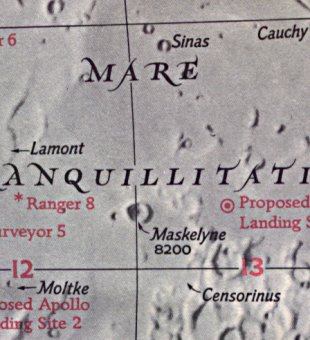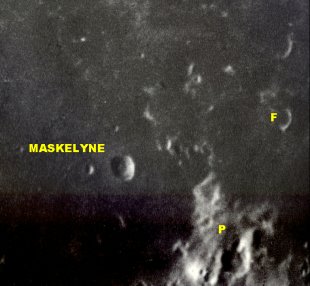Maskelyne F Lunar Light Ray
Initial Reports
Observer: David Mitsky
Date: 2003/1/22
Location: ASH Naylor Observatory, Lewisberry, PA (76*53'4" west,
40*8'54" north)
Elevation: 190 meters
Seeing: good
Transparency: good
Instrument: 17" f/15 classical Cassegrain
Oculars: 40mm University Optics MK-70 (162x), 28mm Edmund Scientific RKE
(216x), 25mm University Optics MK-70 (259x)
Time: 08:40 UT
On the morning of Wednesday, 2003/1/22, at approximately 8:40 UT I noted
what might be a previously unreported lunar light ray in the crater
Maskelyne F using the 17" f/15 classical Cassegrain at the ASH Naylor
Observatory, which is located about 2 miles northwest of Lewisberry,
Pennsylvania.
My friend Tony Donnangelo was observing that night from his home near
Hummelstown, using his Takahashi FS-102 apochromat. We kept in touch
throughout the night since we were curious whether a sunset ray would
occur near the crater Stiborius (see
http://www.shallowsky.com/moon/rukl67.html) at the time predicted. We
both felt that the predicted time was several hours too early. As it
turned out a ray did not materialize at the appointed time, although it
appeared that conditions might be favorable for it to occur at the time
we had calculated using the Lunar Toolkit program.
However, something unexpected transpired. Tony called me to inform me
about an unreported ray he was observing but he was unclear about
exactly where it was located other than it was near Maskelyne (Rukl
chart #36). I happened to notice a very thin and faint ray entering the
crater F (~4.5* N, 35* E) while searching for the ray that Tony was
watching. What Tony saw was an entirely different ray transpiring in
the crater P. The next day he related to me that he did not notice the
ray in F. It would have been very difficult, in my opinion, to see the
F ray with the far smaller aperture he was employing.
So two new lunar rays in relatively close proximity were discovered that
night while attempting to observe a reported ray that did not occur.
The Initial Predictions, Using Data in Original Reporting
Since both of these light rays were observed during the same evening and time frame, the predictions generated will be located on the same page, but in two different sections. It must also be noted that as David noted, the F light ray was very faint, so a larger aperture telescope may be needed to see this elusive ray.
Site Longitude = +76.880
Site Latitude = +40.150
Feature = MASKELYNE F
Feature Longitude: = +35.300
Feature Latitude: = +4.200
Reproducing Lighting For: 2003/1/22 at 08:40 U.T.
Desired Solar Altitude = +2.068(Setting), Azimuth = +268.588
Average Co-longitude = 142.626
==================================================================
Site Longitude = +76.880
Site Latitude = +40.150
Feature = MASKELYNE P
Feature Longitude: = +34.100
Feature Latitude: = +0.500
Reproducing Lighting For: 2003/1/22 at 08:40 U.T.
Desired Solar Altitude = +3.355(Setting), Azimuth = +268.713
Average Co-longitude = 142.545
Crater Description:
No descriptions available for individual craters


Return to Home or use your browser back button



